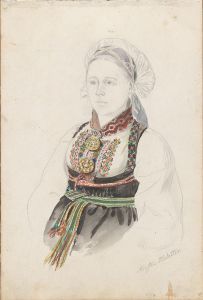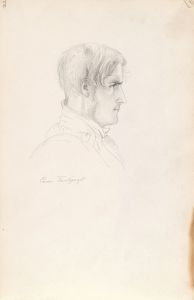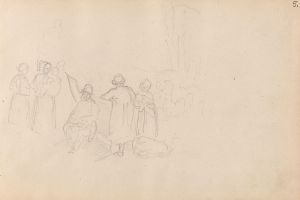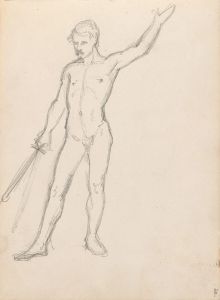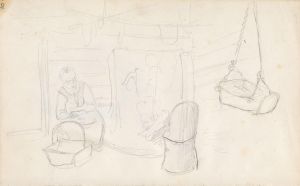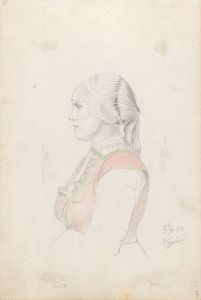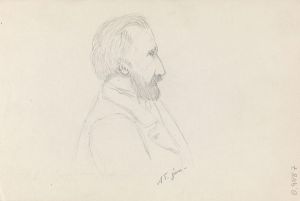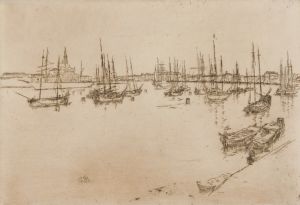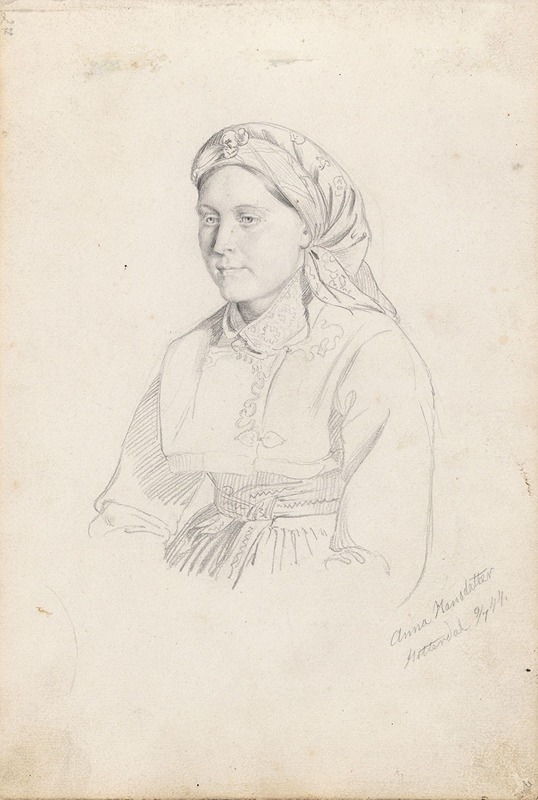
Anna Hansdatter, Heddal
A hand-painted replica of Adolph Tidemand’s masterpiece Anna Hansdatter, Heddal, meticulously crafted by professional artists to capture the true essence of the original. Each piece is created with museum-quality canvas and rare mineral pigments, carefully painted by experienced artists with delicate brushstrokes and rich, layered colors to perfectly recreate the texture of the original artwork. Unlike machine-printed reproductions, this hand-painted version brings the painting to life, infused with the artist’s emotions and skill in every stroke. Whether for personal collection or home decoration, it instantly elevates the artistic atmosphere of any space.
Adolph Tidemand was a prominent Norwegian painter in the 19th century, known for his detailed and culturally rich depictions of Norwegian life and traditions. One of his notable works is "Anna Hansdatter, Heddal," which exemplifies his commitment to capturing the essence of Norwegian rural life.
Adolph Tidemand was born on August 14, 1814, in Mandal, Norway. He studied art in Copenhagen and later in Düsseldorf, Germany, where he became associated with the Düsseldorf school of painting. This movement was characterized by its focus on detailed, realistic portrayals and often included historical or genre scenes. Tidemand's work is particularly noted for its ethnographic interest, as he often depicted Norwegian folk culture, customs, and costumes with great accuracy and empathy.
"Anna Hansdatter, Heddal" is a painting that reflects Tidemand's interest in Norwegian folk culture. The painting portrays Anna Hansdatter, a woman from Heddal, a village in Norway known for its historic stave church, Heddal Stave Church, which is the largest of its kind in Norway. While specific details about Anna Hansdatter herself are scarce, the painting is significant for its representation of Norwegian rural life during the 19th century.
Tidemand's work often involved traveling to various parts of Norway to study and document local customs and traditional costumes. This dedication to authenticity is evident in "Anna Hansdatter, Heddal," where the subject is depicted in traditional Norwegian attire. The clothing and setting provide insight into the daily life and cultural heritage of the time, showcasing Tidemand's skill in capturing the nuances of Norwegian identity.
The painting is characterized by its attention to detail and the use of light and shadow to create depth and realism. Tidemand's technique involved careful observation and a meticulous approach to rendering textures and patterns, particularly in the clothing and background elements. This attention to detail not only highlights the artist's technical skill but also serves to emphasize the cultural significance of the subject matter.
"Anna Hansdatter, Heddal" is part of Tidemand's broader body of work that includes other famous paintings such as "Bridal Procession on the Hardangerfjord" and "Haugianerne." These works collectively contribute to Tidemand's reputation as a key figure in Norwegian art, particularly in the context of the national romantic movement, which sought to celebrate and preserve Norwegian culture and history during a time of growing national consciousness.
The painting is housed in the National Museum of Art, Architecture and Design in Oslo, Norway, which holds a significant collection of Tidemand's works. This institution plays a crucial role in preserving and showcasing Norwegian art and cultural heritage, allowing viewers to appreciate the historical and artistic value of works like "Anna Hansdatter, Heddal."
In summary, "Anna Hansdatter, Heddal" by Adolph Tidemand is a testament to the artist's dedication to capturing the essence of Norwegian rural life and culture. Through his detailed and realistic portrayal, Tidemand provides a window into the 19th-century Norwegian experience, making his work an invaluable part of Norway's artistic and cultural legacy.







